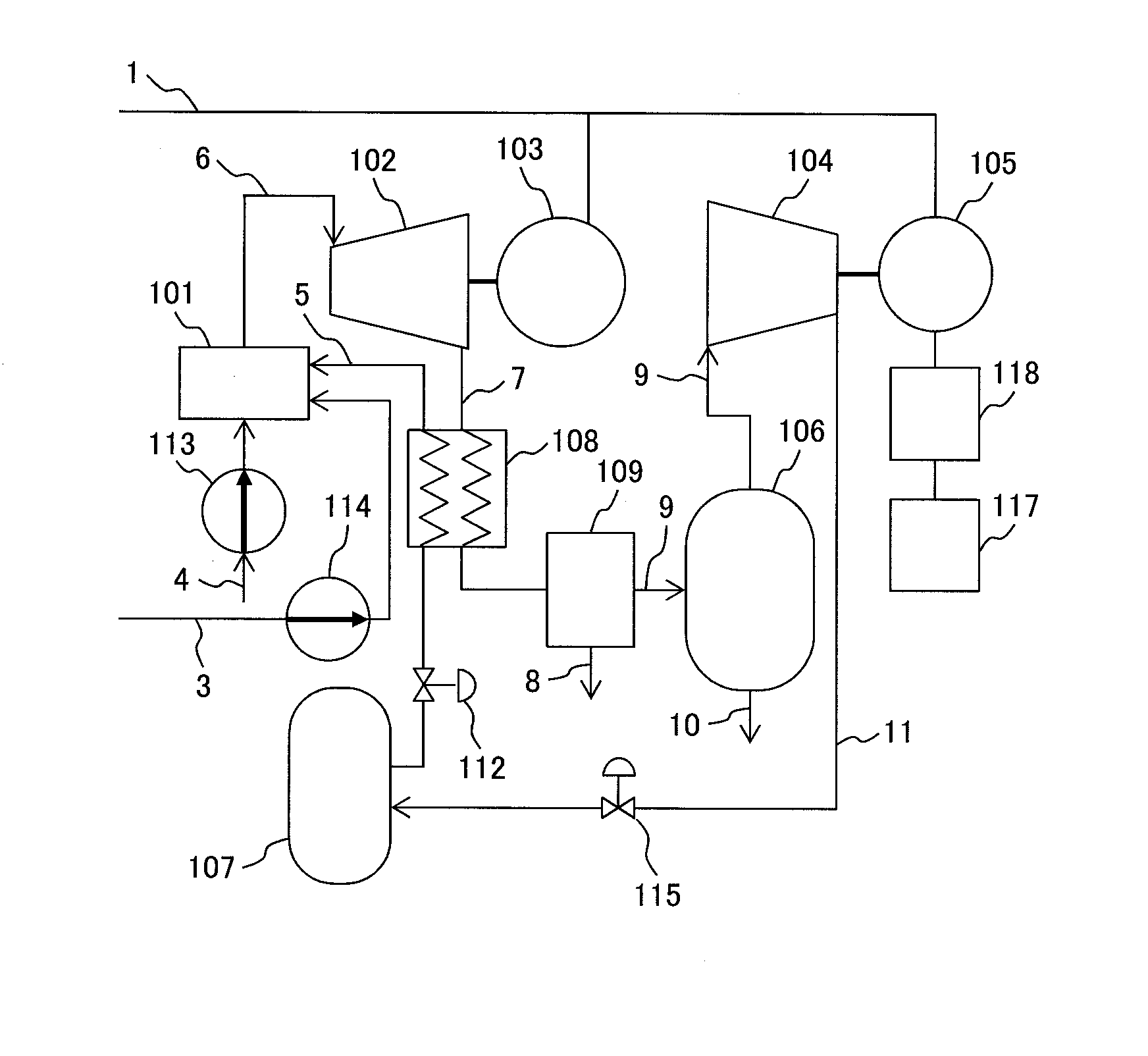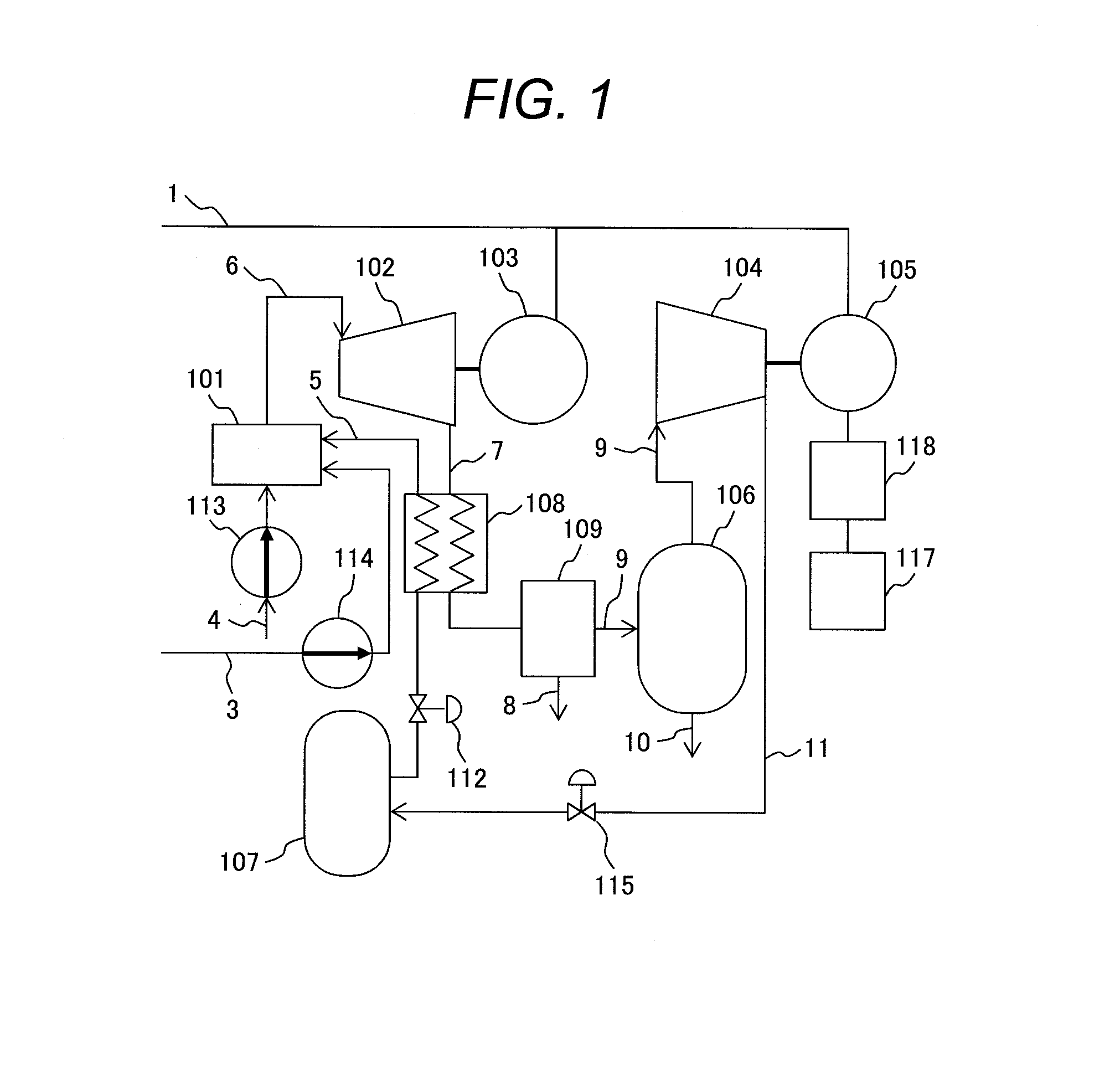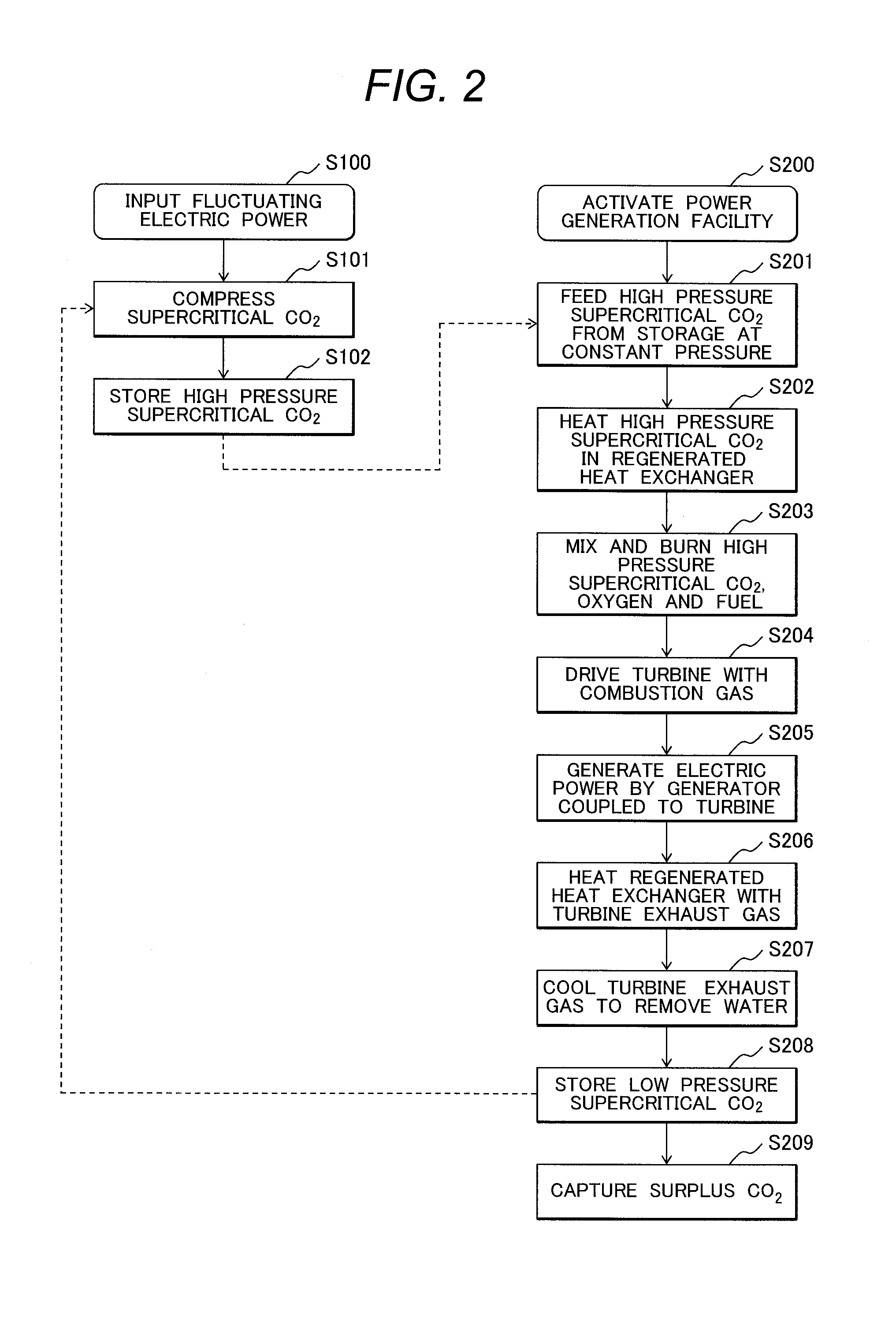Thermal Power Generation System and Method for Generating Thermal Electric Power
- Summary
- Abstract
- Description
- Claims
- Application Information
AI Technical Summary
Benefits of technology
Problems solved by technology
Method used
Image
Examples
first embodiment
[0023]FIG. 1 is a system diagram of a thermal power generation system according to a first embodiment of the present invention. In FIG. 1, the thermal power generation system according to the first embodiment uses supercritical carbon dioxide 5 as a working fluid. The thermal power generation system includes a combustor 101 which burns oxygen 3 and fuel 4 with the supercritical carbon dioxide 5, a pump 114 used to supply the oxygen 3 to the combustor 101, a pump 113 used to supply the fuel 4 to the combustor 101, a supercritical CO2 turbine 102 which is driven by a mixed gas 6 of the supercritical carbon dioxide and water vapor supplied from the combustor 101, and a supercritical CO2 turbine generator 103 which is driven by the supercritical CO2 turbine 102.
[0024]In addition, the thermal power generation system of the first embodiment includes a regenerated heat exchanger 108 which heats the supercritical carbon dioxide 5 with turbine exhaust gas 7 emitted from the supercritical CO2...
second embodiment
[0040]With reference to FIG. 4, the features of the second embodiment will be described. FIG. 4 is a system diagram of a thermal power generation system according to the second embodiment of the present invention. The description below does not provide explanations about the same components and configurations as those in the first embodiment, but focuses on different components and configurations.
[0041]In FIG. 4, the thermal power generation system according to the second embodiment includes a heat storage 120 which recovers and stores heat of high pressure supercritical carbon dioxide 11 obtained through compression by the supercritical CO2 compressor 104. With the heat storage 120, the heat generated during compression can be accumulated without going to waste and can be reused to heat the high pressure supercritical carbon dioxide 5 stored in the high pressure supercritical CO2 storage 107. Thus, the heat loss which occurs while the high pressure supercritical carbon dioxide is s...
third embodiment
[0044]FIG. 5 is a system diagram of a thermal power generation system according to the third embodiment of the present invention. The third embodiment possesses basic components common to the second embodiment. Therefore, descriptions of the common components to the second embodiment shown in FIG. 4 are omitted and the features of the third embodiment will be described by focusing on uncommon components with reference to FIG. 5.
[0045]In FIG. 5, the thermal power generation system according to the third embodiment includes a high pressure CO2 capturing unit 130 which captures high pressure supercritical carbon dioxide 30 from the high pressure supercritical CO2 storage 107 and sends it out, instead of capturing surplus carbon dioxide 10 from the low pressure CO2 storage 106. With the high pressure CO2 capturing unit 130, the CO2 emission into the air can be reduced and the CO2 captured is in a form available to EOR (Enhanced Oil Recovery) and other applications.
PUM
 Login to View More
Login to View More Abstract
Description
Claims
Application Information
 Login to View More
Login to View More - R&D
- Intellectual Property
- Life Sciences
- Materials
- Tech Scout
- Unparalleled Data Quality
- Higher Quality Content
- 60% Fewer Hallucinations
Browse by: Latest US Patents, China's latest patents, Technical Efficacy Thesaurus, Application Domain, Technology Topic, Popular Technical Reports.
© 2025 PatSnap. All rights reserved.Legal|Privacy policy|Modern Slavery Act Transparency Statement|Sitemap|About US| Contact US: help@patsnap.com



